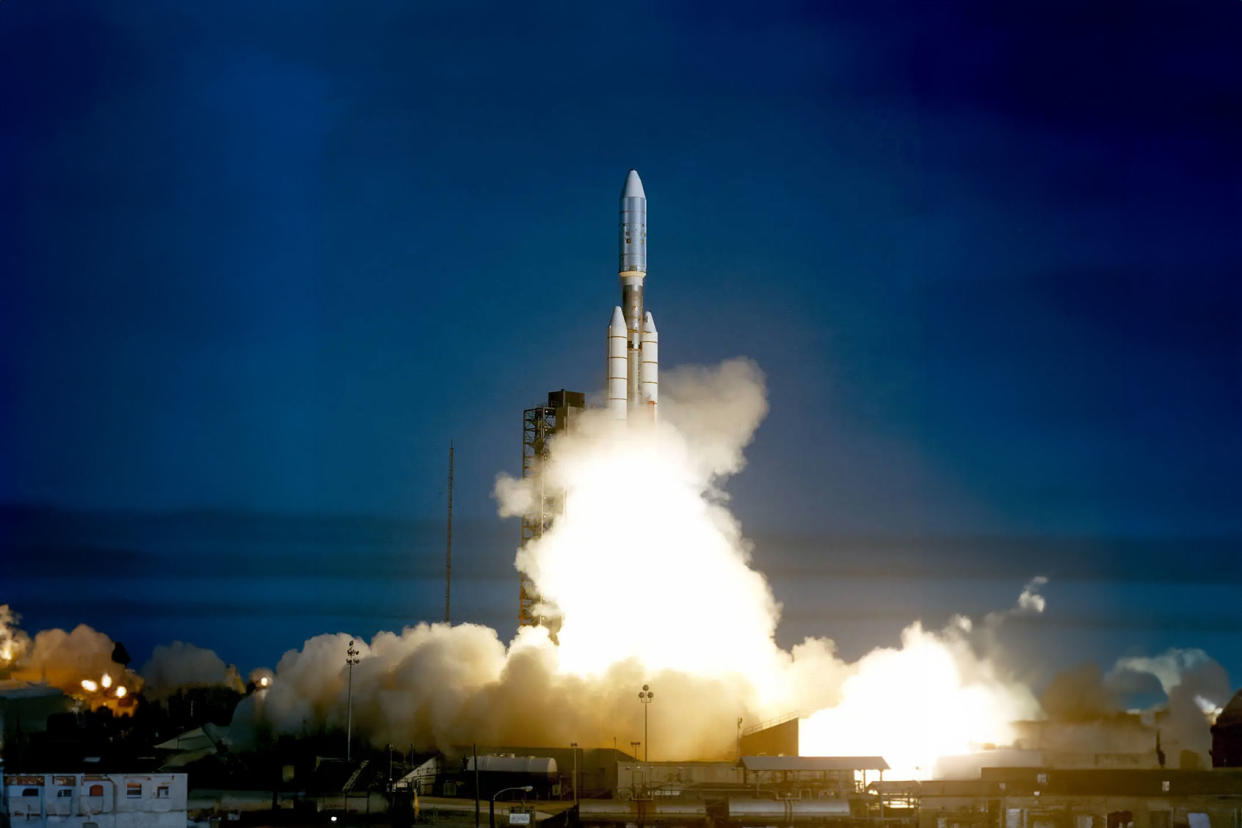What Voyager 1's near-death experience says about the future of space exploration

From more than 15 billion miles away, NASA engineers last April began repairing a space probe that is headed to the constellation of Ophiucus, though it won't arrive for some 38,000 years. NASA launched Voyager 1 in 1977 and it has already outlived expectations, but the space agency hopes to continue receiving data from the probe until at least 2030. Yet after Voyager 1 experienced a computer glitch in November, it began transmitting incomprehensible data (which isn't entirely unusual for it), prompting NASA to initiate those long-distance fixes.
After some uncertainty if any of it would work, the repairs succeeded. Even better, when Salon spoke with NASA about the problem of fixing distance spacecraft, the experts were optimistic about its future and what it says about space exploration in general.
To understand why, it is first necessary to break down what happened to Voyager 1 in the first place. In November, the space probe sent a signal that did not include any data. Engineers figured out that the issue was either with the flight data subsystem (FDS) or the telemetry modulation unit (TMU). By the last week of February, NASA sent a "poke" to Voyager 1 to prompt the FDS to send a memory readout with data; not only did this succeed, but NASA soon uploaded a separate command that caused Voyager 1 to reply with a full memory readout that helped them identify the specific issue with the FDS.
"The team confirmed that the issue is with the FDS," NASA Jet Propulsion Laboratory media relations specialist Calla Cofield told Salon. "A chip responsible for storing 256 words of the FDS memory has a stuck bit (the code is stuck at a 0 or a 1), indicating the part failed, either due to age or due to external particle damage. This section represents about 3% of the FDS memory. The team would need to relocate the portion of the software code stored on the damaged chip."
During the April mission, NASA transmitted a command to the Voyager 1 to both relocate the portion of the impacted FDS software code and redirect references to that code to other places in the spacecraft software.
"On April 20, the team received engineering data from the spacecraft, indicating that the command was a success," Cofield said. "All indications suggest the spacecraft is fine after five months of no contact."
The team began once again receiving scientific data from Voyager 1 on May 19, and by June all of the science instruments on Voyager 1 had resumed sending usable data. Even so, Cofield added that "housekeeping [is] still ongoing with the spacecraft."
Of course, this is not the end of the issue; Voyager 1 is not the only space probe out there that may some day require repairs. Currently there are two other space probes that have left the Solar System and remain operational, Voyager 2 and New Horizons. Additionally NASA has sent out two other probes that are now defunct, Pioneer 10 and Pioneer 11. Can the lessons which allowed NASA to repair Voyager 1 be applied to these and other distant space craft?
Want more health and science stories in your inbox? Subscribe to Salon's weekly newsletter Lab Notes.
"The future is less about repairs than about finding ways to work around problems," Bob Rasmussen, a member of the Voyager flight team, said. "We know several life-limiting factors and have strategies for preserving capability as long as possible. We can’t predict outright failures though, so we need to deal with them as they arise."
This is not to say that Rasmussen is entirely hopeful about NASA's ability to salvage malfunctioning probes. In 2019, the agency had to turn off a heater for the cosmic ray subsystem instrument in Voyager 2 to conserve the probe's power. In April NASA further kept Voyager 2 chugging along by tapping into a small reservoir of backup power that is used to fuel the onboard safety mechanism. By doing this, NASA believes it can keep the craft powered with enough juice that they will not need to shut down a scientific instrument until 2026.
Voyager 1 and 2, meanwhile, are always on the verge of a more lasting breakdown. Even if all of their systems perform optimally going forward, the spacecrafts are still not expected to survive past the 2030s. If anything, the fact that they lasted this long is a testament to the skill and dedication of the 1970s engineers who built them. Unfortunately, there could be a day when more than one of their vital systems simply ceases to properly function.
"Worst case is that both can fail at any time," Rasmussen said. "Not all failures are recoverable. For many, we would never be able to tell what happened, because contact would simply cease."
Rasmussen added that the best case scenario is that Voyager 1 continues to function for another five to 10 years. "We have a long-term strategy for gradually reducing activities as power wanes and for using degraded modes of operation," Rasmussen said. "But we also know what happens to best laid plans."
On a tragic note, June was also the month in which Ed Stone, the man who pioneered the Voyager missions and led their missions for half a century, died. In their obituary for former Jet Propulsion Laboratory director, NASA wrote that Stone was "a trailblazer who dared mighty things in space" and "took humanity on a planetary tour of our solar system and beyond, sending NASA where no spacecraft had gone before."

